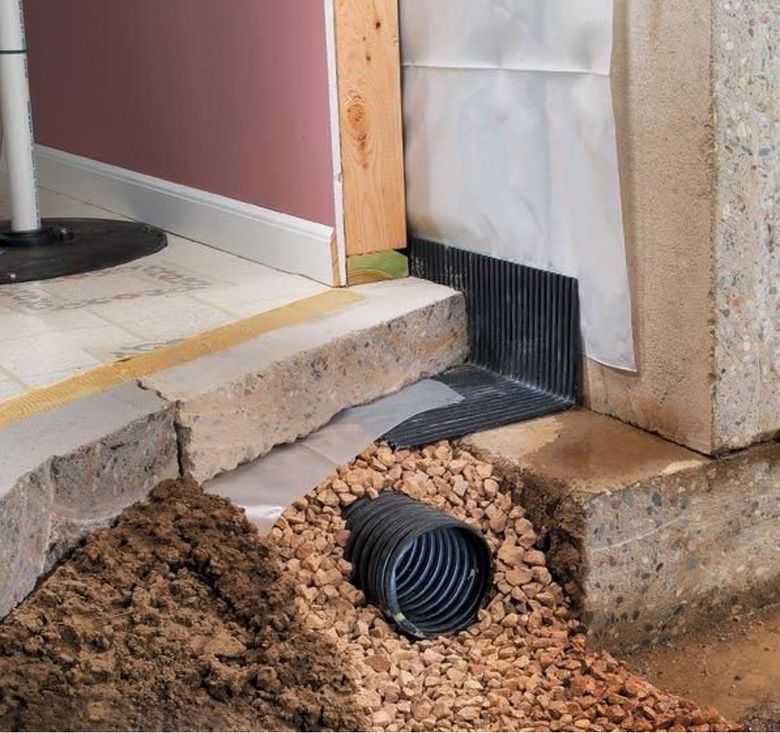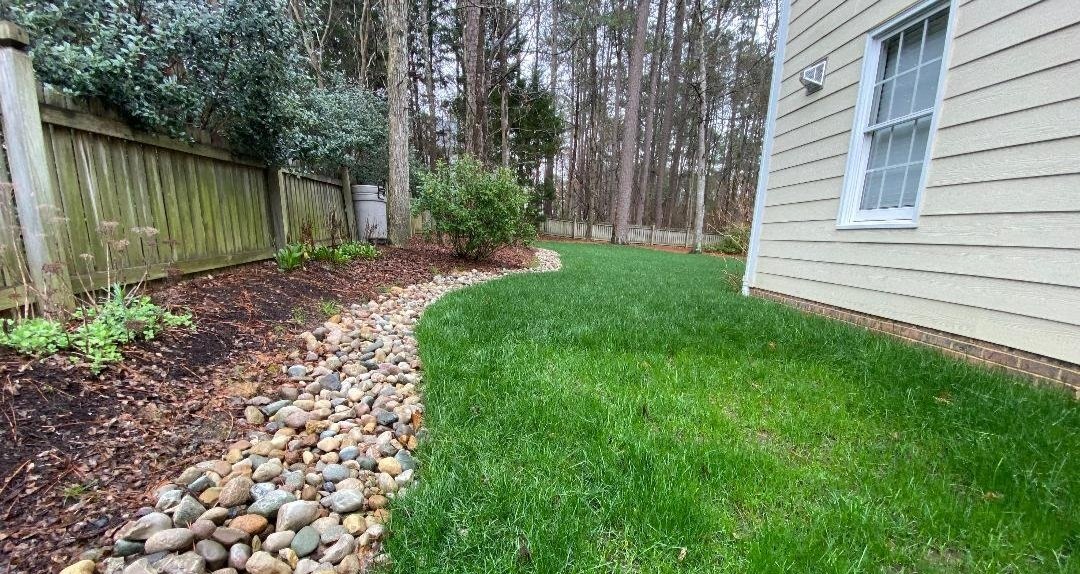Common Errors to Watch Out For When Installing a Portland French Drain
Common Errors to Watch Out For When Installing a Portland French Drain
Blog Article
The Important Overview to Preserving Your French Drain for Resilient Performance
Maintaining your French drain is key to its effectiveness and your residential or commercial property's defense. Routine checks can save you from expensive fixings and water damage. You'll want to recognize what indications to try to find and exactly how commonly to evaluate your system. And also, recognizing the cleansing process can make a significant difference. Allow's discover the necessary steps for ensuring your drainpipe operates well for many years to come.
Comprehending the Feature of a French Drain
A French drainpipe is an essential component in handling water around your home. It routes excess water away from your structure, protecting against flooding and damages. When hefty rain falls, the drainpipe gathers water through a perforated pipeline buried in gravel. This system enables water to stream freely, lowering pressure on your basement walls and minimizing the threat of leaks.You may wonder how it functions in technique. As water saturates the dirt, gravity draws it toward the drain. The perforated pipeline captures this water, moving it to an assigned drainage area or storm sewer. This process maintains your backyard dry and secures your home's architectural integrity.Understanding just how a French drain features is vital to appreciating its value. By efficiently funneling water away, it assists keep a safe and completely dry living setting. Maintaining your French drain in leading problem warranties you avoid pricey repairs down the line.
Regular Inspections: What to Search for
When you're inspecting your French drain, begin by looking for any kind of clogs that could be obstructing water flow. Focus on signs of surface area erosion around the drainpipe, as this can indicate potential concerns. Regular analyses will certainly help keep your water drainage system functioning properly.
Obstructed Drain Evaluation
How can you inform if your French drain is blocked? Watch for water pooling in your lawn, particularly after heavy rain. If you see locations where water gathers rather of draining pipes, that's a red flag. You must also examine the drainpipe outlet; if water isn't spurting as it should, there's most likely a blockage. Listen for uncommon gurgling noises, which can suggest trapped air. Furthermore, check the drainpipe's surface for any kind of plants growth, as origins can infiltrate and obstruct the system. Ultimately, if you smell stuffy smells, it can direct to stagnant water brought on by an obstruction. Frequently examining these indications can aid you preserve your French drainpipe effectively and protect against expensive fixings.
Surface Disintegration Check

Cleansing Your French Drain: Step-by-Step Overview
Cleansing your French drainpipe is essential for keeping it working appropriately. You'll require some particular devices and a clear process to ensure every little thing runs efficiently. Allow's go through the steps and suggestions for keeping your drainpipe effectively.
Tools You'll Need
To deal with the task of cleansing your French drainpipe successfully, you'll desire to gather a couple of important tools. Get a sturdy set of gloves to secure your hands from debris and sharp items. A small shovel or trowel will certainly aid you get rid of dust or obstructions around the drainpipe. For cleaning out the inside, a plumbing professional's serpent or a high-pressure water nozzle can be extremely helpful. You'll also need a pail for accumulating any debris you take out. Having a garden hose on hand will certainly make it much easier to wash out the drainpipe and assure it's streaming smoothly. With these devices all set, you'll be established for a comprehensive cleaning session!
Cleaning Process Steps
Start by assessing the area around your French drainpipe for any type of visible debris or blockages. Remove leaves, branches, or dirt that might block water flow. Next off, examine the inlet and outlet locations; clear any kind of obstructions to ensure proper drainage. Make use of a yard tube to flush the drain, directing water into the inlet. This assists remove any type of gathered sludge or sediment. Take into consideration using a plumbing's serpent to damage them up if you see relentless obstructions. After cleaning, inspect the crushed rock around the drainpipe; replenish it if it's removed. Validate the drain covers are intact and firmly in place to protect against particles from going into. Regular cleaning keeps your French drain working efficiently.
Maintenance Frequency Tips
While normal upkeep is essential for your French drain's long life, knowing how commonly to preserve it can make all the distinction. Ideally, you must evaluate your French drainpipe at least twice a year, ideally in spring and loss. After heavy rainfall or snowmelt, look for blockages or debris. If you observe any standing water, it's time to cleanse your drain.In locations with heavy vegetation, even more constant maintenance-- regarding every three months-- may be necessary. Furthermore, take into consideration cleaning your French drain after major storms or if you observe water pooling in your yard. By remaining proactive, you'll guarantee your French drainpipe functions efficiently and shields your residential or commercial property from water damage. Normal checks will save you time and money in the lengthy run.
Identifying Usual Issues and Their Solutions
When you discover water pooling in your backyard or damp places in your basement, it's important to determine common concerns with your French drain and carry out efficient services. One regular issue is obstructing, usually brought on by particles like fallen leaves or sediment. To fix this, you can utilize a plumbing serpent or a high-pressure water jet to clear blockages.Another problem might be improper slope. If your drainpipe isn't sloped properly, water won't move away from your home. You can readjust the incline by excavating and rearranging the drainpipe pipe.Lastly, check for damage or cracks in the drainpipe itself. If you find any kind of, replacing the harmed sections is very important for peak performance. By resolving these issues immediately, you'll aid assure that your French drain remains to work properly, safeguarding your residential property from water damages and keeping a completely dry, risk-free setting.
Seasonal Maintenance Tips for Your French Drain
Addressing common concerns with your French drainpipe is just the initial step in assuring its long-lasting effectiveness. Seasonal upkeep is essential for peak efficiency. In the spring, clear away leaves and particles that might have collected during winter season. Look for any obstructions in the electrical outlet or capture basin, as water requires a clear course to stream freely.During summer, evaluate your drainpipe for any type of signs of moving or working out soil. Make sure it's still level and working correctly. As fall strategies, clear out any type of dropped entrusts to protect against blockages prior to winter season arrives.In winter months, expect freezing temperature sites levels. Make sure your drainpipe isn't at risk of cold if you live in a cold environment. Insulating revealed pipes can help. Routine checks and prompt maintenance can prevent expensive fixings and keep your French drainpipe working properly year-round. Keep aggressive and take pleasure in comfort recognizing your water drainage system is in great shape!
When to Call in a Professional
Recognizing when to call a specialist can save you time and avoid more damages to your French drainpipe. If you notice consistent standing water in your yard, it's a clear sign that your drainpipe may be blocked or damaged. Don't disregard weird smells, as they can suggest sewage back-up or degeneration, which requires instant attention.If you find that your drainpipe isn't operating correctly after attempts to clean or maintain it, it's time to reach out for professional help. In addition, if you're unclear regarding the underlying issues or do not have the necessary devices, working with an expert can provide peace of mind.Finally, if your French drain is old or has actually experienced substantial damage, expert evaluation can determine whether fixings or full substitute is needed. Trust fund the experts to guarantee your drainage system works successfully for years to come.
Tips for Preventing Future Drainage Problems
To keep your French drainpipe operating successfully, regularly evaluating and preserving it can make all the distinction. Begin by removing debris, leaves, and dust from the surface area and drain openings. This prevents blockages that can cause water back-up. Check the crushed rock around the drainpipe; if it's compacted or deteriorated, consider including fresh gravel to keep excellent flow.Next, draw away water far from your drainpipe by guaranteeing downspouts and seamless gutters are clear and guiding water a minimum of three feet away from your structure. On a regular basis evaluate for any indications of damage or sagging. If you notice concerns, resolve them immediately.Finally, think about installing a filter or a catch container to trap larger debris before it gets in the drainpipe. By remaining proactive with these ideas, you'll minimize the threat of future water drainage issues and keep your French drainpipe in top form.
Regularly Asked Questions
For how long Does a French Drainpipe Normally Last?
A French drain commonly lasts around 30 to 40 years, depending upon the products used and maintenance (Portland French Drain). If you stay on par with normal checks, you can prolong its life-span even additionally
Can I Mount a French Drain Myself?
Yes, you can install a French drain on your own if you have actually obtained the right tools and understanding. Simply make sure to plan carefully, follow neighborhood policies, and assurance correct drain to avoid future concerns.
What Products Are Utilized in a French Drainpipe?
You'll require perforated pipe, gravel, landscape material, and a solid drainage pipe for your French drain. These products aid redirect water efficiently, stopping flooding and keeping your residential property completely dry and secure from water damage.

Is a License Required to Install a French Drain?
You'll likely require a permit to mount a French drainpipe, depending on regional guidelines. Examine with your link municipality to ensure you abide by any required guidelines and avoid possible concerns throughout setup.
What Are the Costs Connected With French Drain Upkeep?
Keeping a French drainpipe generally costs between $100 and $500 annually. You'll need to take into account expenses for cleaning, repairs, and evaluations. Regular maintenance assists prevent bigger assurances and costs your system functions properly for several years - Portland French Drain. When you're checking your French drain, begin by examining for any clogs that could be obstructing water circulation. By remaining aggressive, you'll ensure your French drain features properly and secures your building from water damage. When you observe water pooling in your i thought about this lawn or damp places in your basement, it's important to identify common concerns with your French drain and apply reliable services. You can change the slope by excavating and rearranging the drain pipe.Lastly, check for damage or fractures in the drain itself. Examine the gravel around the drain; if it's compressed or worn down, consider including fresh gravel to maintain suitable flow.Next, divert water away from your drain by making sure rain gutters and downspouts are clear and guiding water at least three feet away from your foundation
Report this page